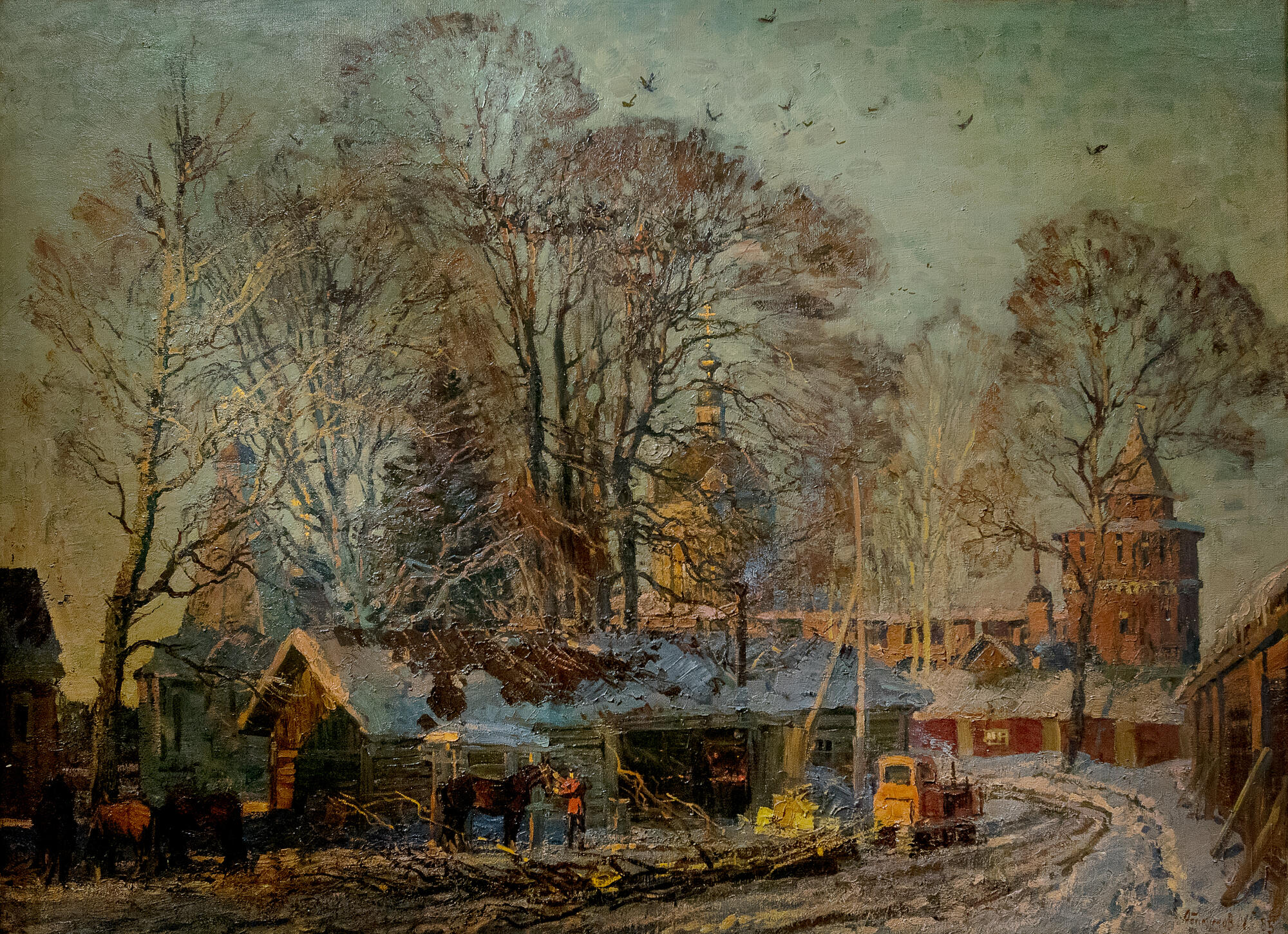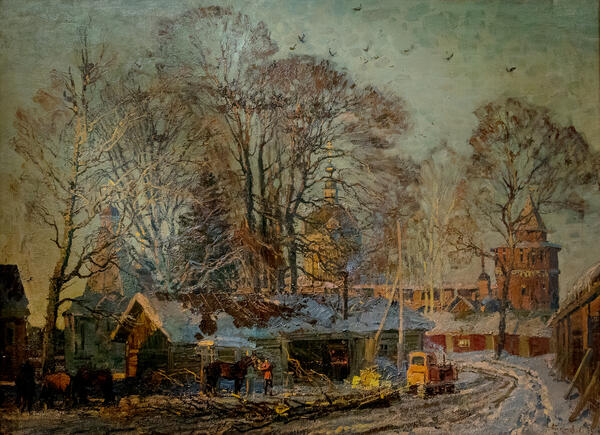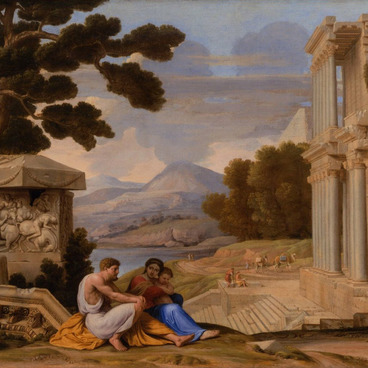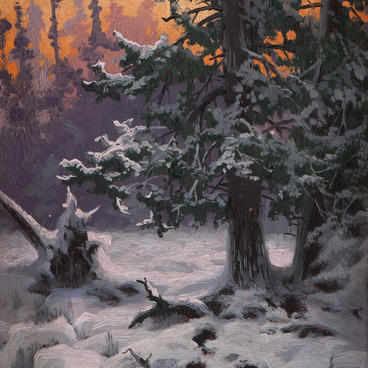Mikhail Georgievich Abakumov (1948–2010) was born in the city of Kolomna, Moscow Region. In 1980, he entered the Union of Russian Artists, was awarded the title of People’s Artist of the Russian Federation, and in 1993 became an Honored Artist of the Russian Federation. Remarkably, that one of the main awards - the Gold Medal of the Russian Academy of Arts - was awarded to him for a series of landscapes.
The painting “Spring Brightens Up” from the Zaraysk Kremlin collection is a perfect example of the artist’s landscape painting. The Kolomna Kremlin peers out from behind the backyards of small rural houses. This powerful counterwork was built in the 16th century by the order of Vasily III to strengthen the southern approaches to Moscow. The Kolomna Kremlin was one of the largest fortresses of its time and was never captured by force. Only once, in the Time of Troubles, the Poles entered the city by stratagem.
The artist depictures his hometown with a touching love to everything in it - the dour Kremlin, eminent churches, small village buildings that we see in the foreground. In many respects, this effect is supported by the warm sunset lighting chosen by the artist. Many of Abakumov’s paintings are dedicated to temples, as well as ancient cities of our country. The theme of village houses is also close to the painter - he spent a significant part of his life in a village located in the Vologda region. In his own words, the only true way of any person’s living is to live the simple countryside life. Another distinctive feature of the master’s work is his constant passion for the image of the sky. In the painting “Spring Brightens Up” it occupies 2/3 of the canvas space. The artist paints it in different tones - from azure blue in the upper part of the picture to sunset yellow in the lower left part.
Abakumov created this picture in 1985, when Kolomna was not yet a popular tourist destination. The peculiarity of the city is that many historical buildings have been preserved in it. Until the middle of the 19th century, it was a large trading city, but everything changed with the opening of the Moscow-Saratov railway in 1862. The road bypassed the city, and active trade ceased. Today, many of the historical sights of Kolomna have been restored, and the city is included in the “Provincial Ring of the Moscow Region”.
The painting “Spring Brightens Up” from the Zaraysk Kremlin collection is a perfect example of the artist’s landscape painting. The Kolomna Kremlin peers out from behind the backyards of small rural houses. This powerful counterwork was built in the 16th century by the order of Vasily III to strengthen the southern approaches to Moscow. The Kolomna Kremlin was one of the largest fortresses of its time and was never captured by force. Only once, in the Time of Troubles, the Poles entered the city by stratagem.
The artist depictures his hometown with a touching love to everything in it - the dour Kremlin, eminent churches, small village buildings that we see in the foreground. In many respects, this effect is supported by the warm sunset lighting chosen by the artist. Many of Abakumov’s paintings are dedicated to temples, as well as ancient cities of our country. The theme of village houses is also close to the painter - he spent a significant part of his life in a village located in the Vologda region. In his own words, the only true way of any person’s living is to live the simple countryside life. Another distinctive feature of the master’s work is his constant passion for the image of the sky. In the painting “Spring Brightens Up” it occupies 2/3 of the canvas space. The artist paints it in different tones - from azure blue in the upper part of the picture to sunset yellow in the lower left part.
Abakumov created this picture in 1985, when Kolomna was not yet a popular tourist destination. The peculiarity of the city is that many historical buildings have been preserved in it. Until the middle of the 19th century, it was a large trading city, but everything changed with the opening of the Moscow-Saratov railway in 1862. The road bypassed the city, and active trade ceased. Today, many of the historical sights of Kolomna have been restored, and the city is included in the “Provincial Ring of the Moscow Region”.



